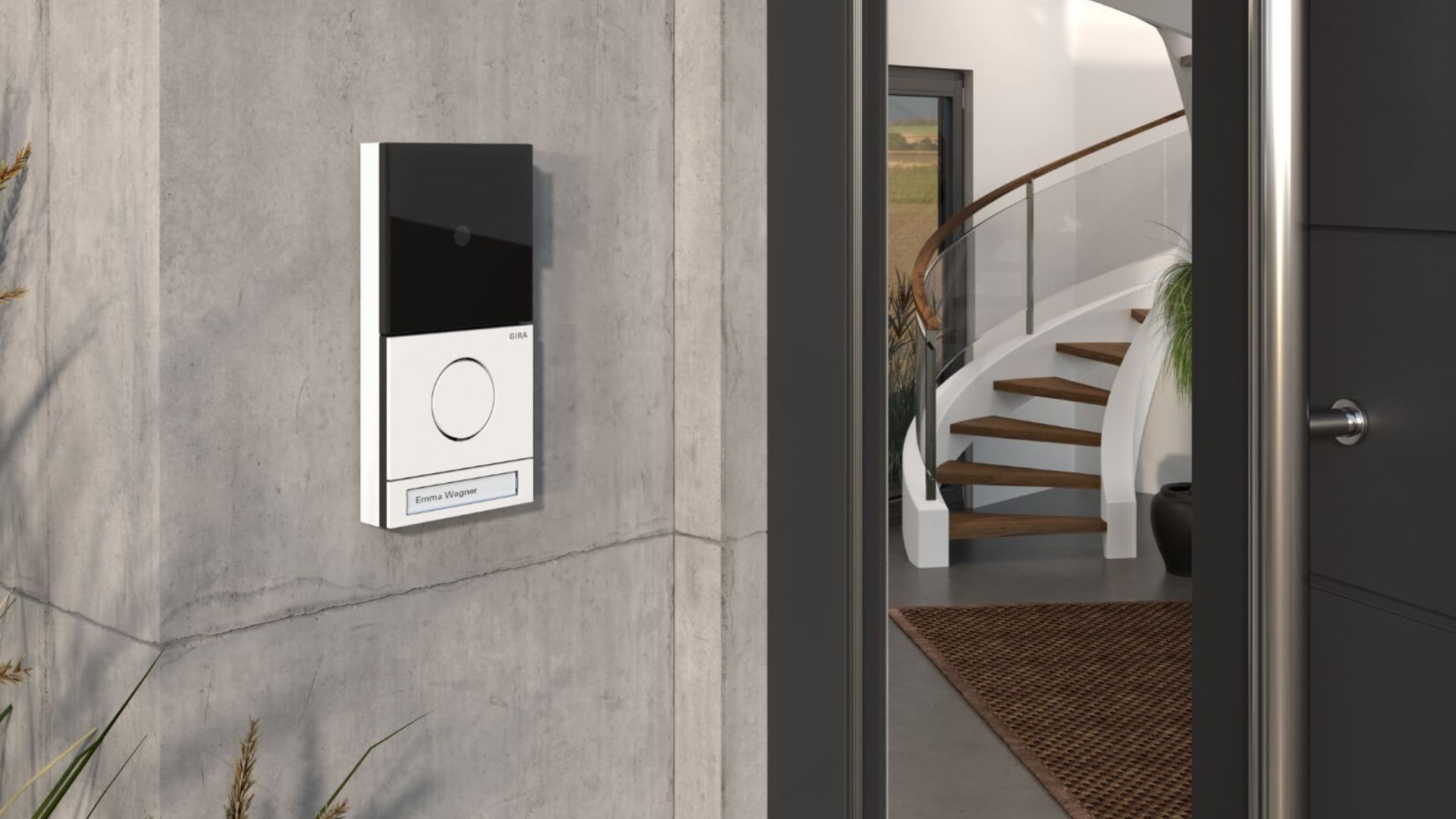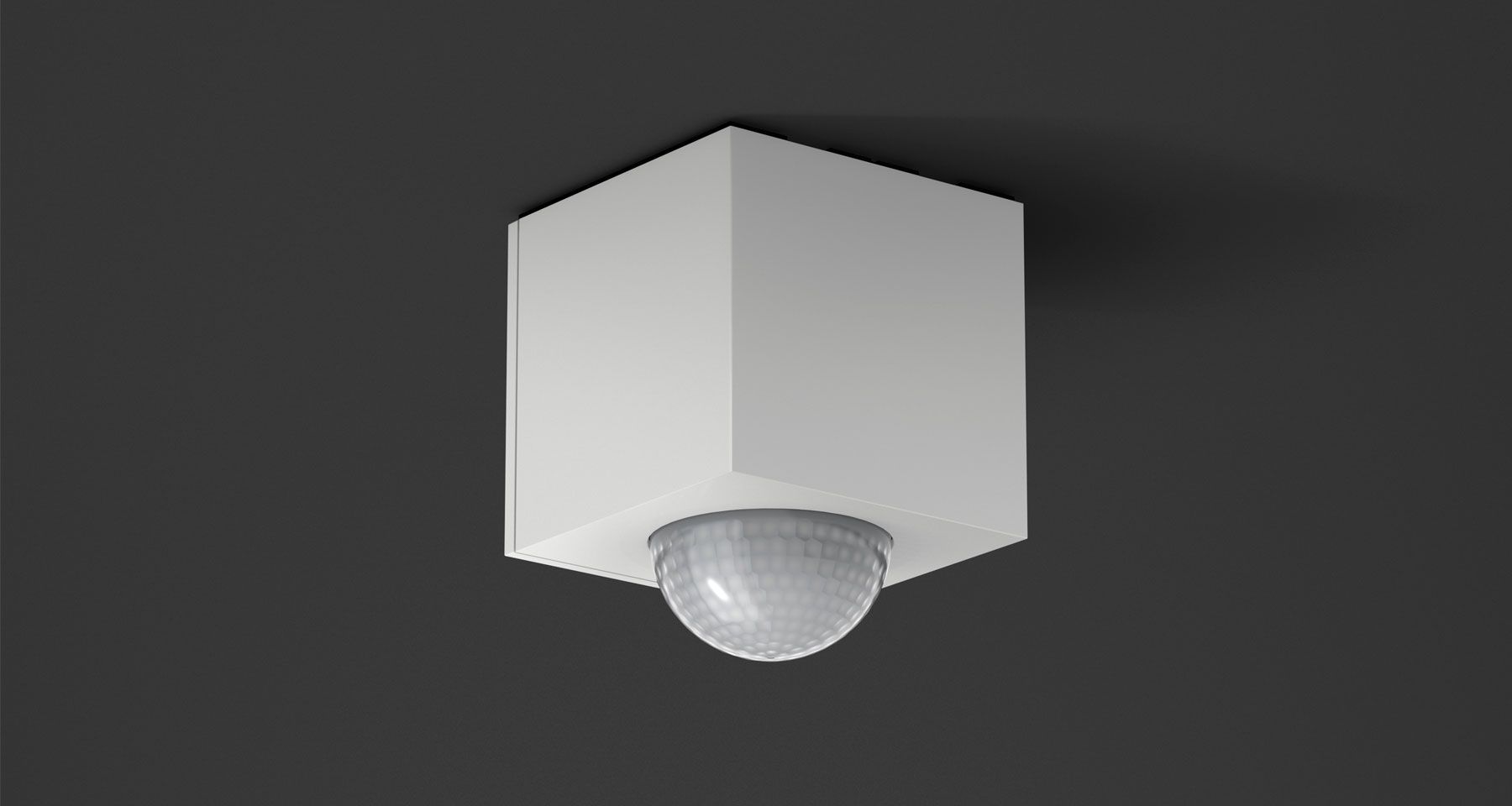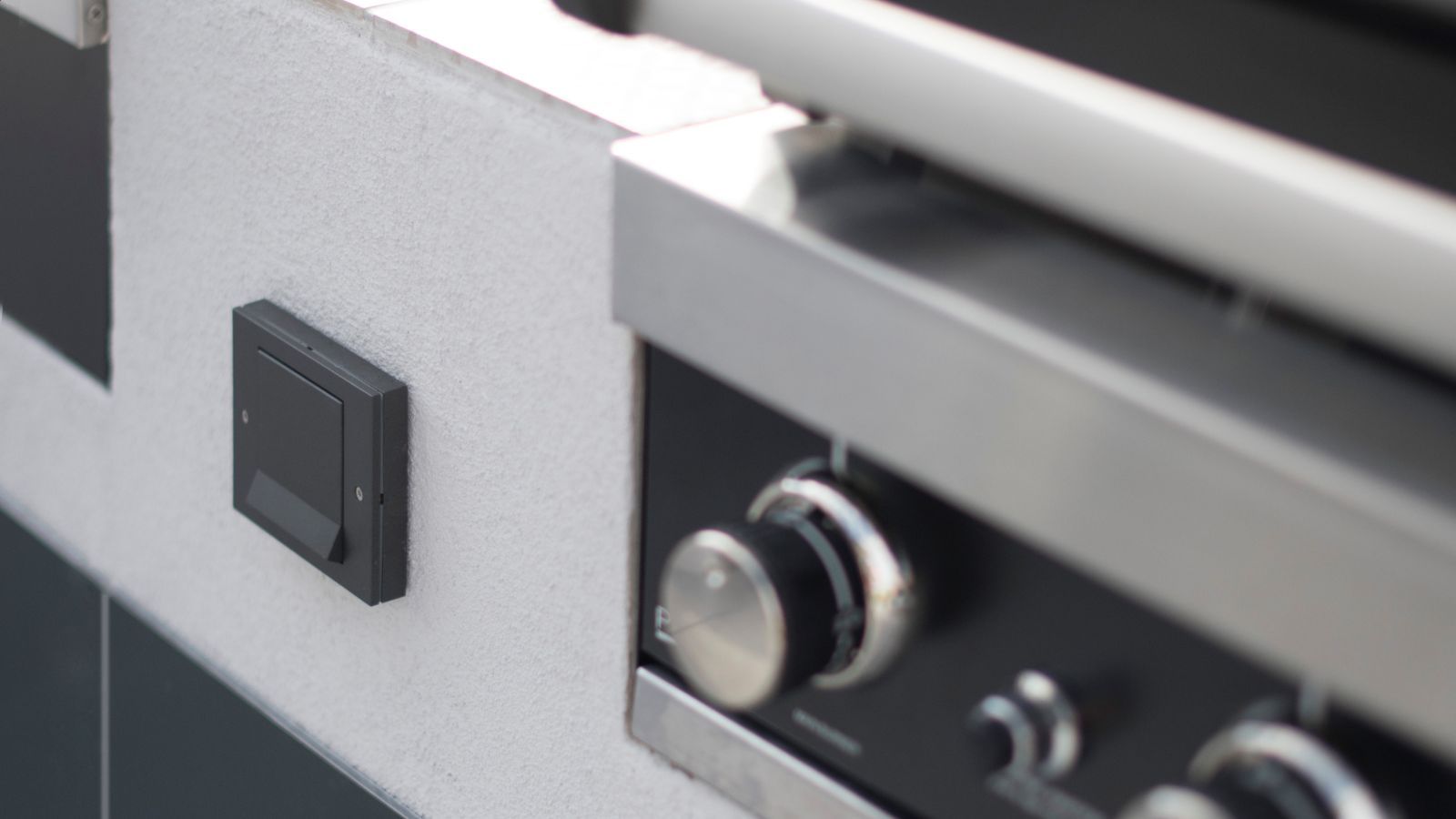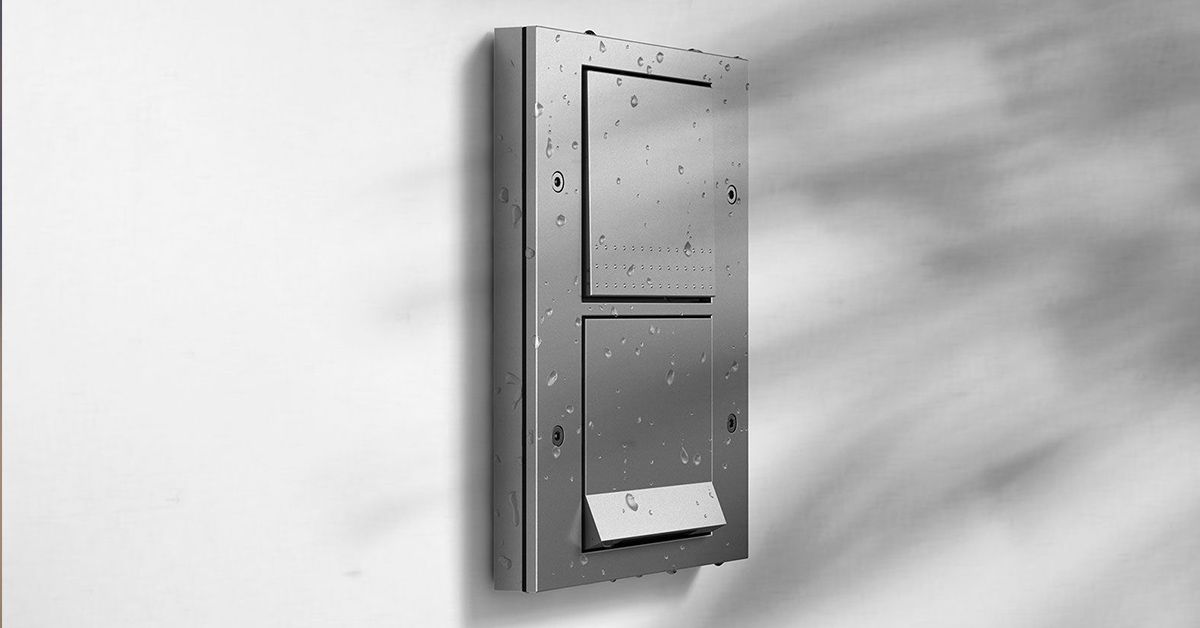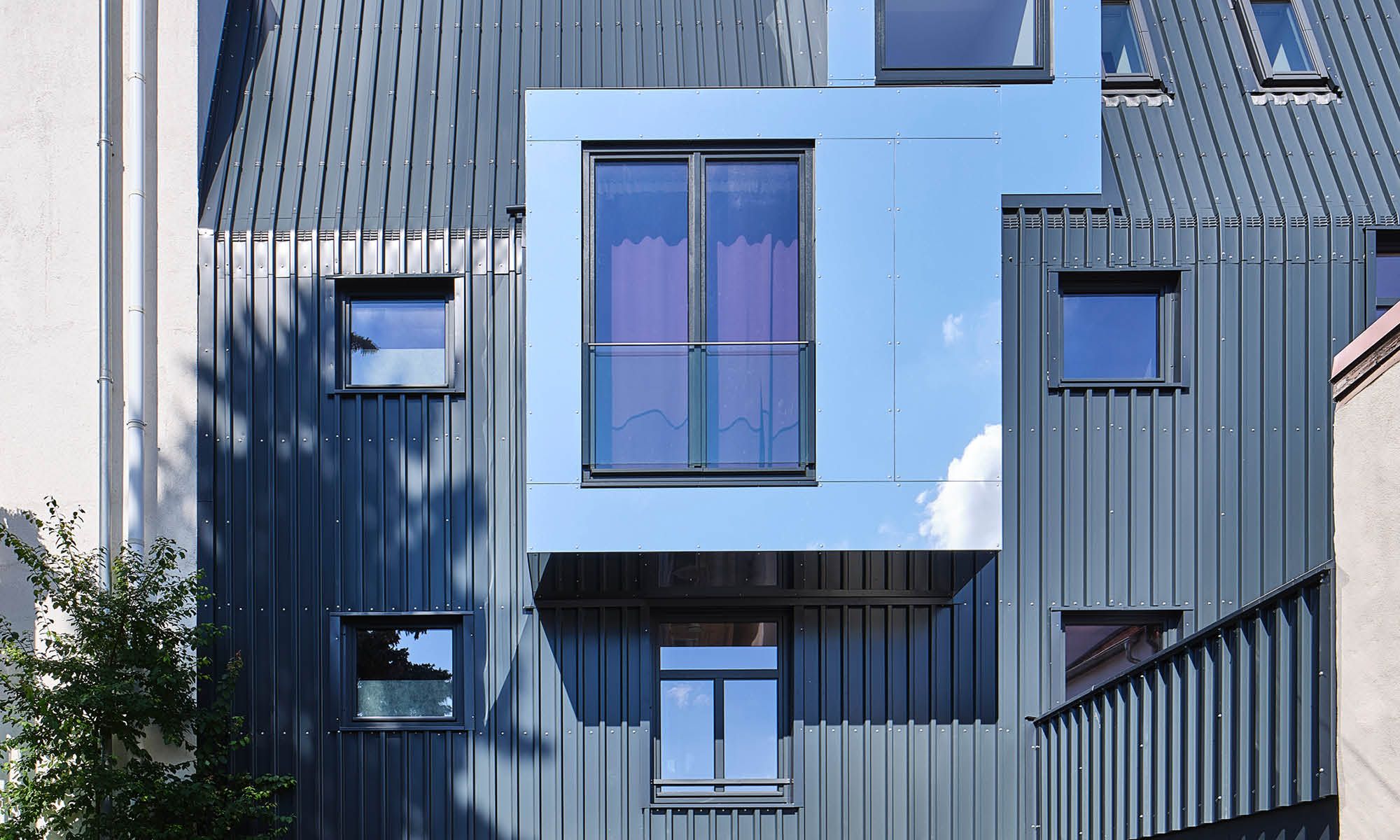
Whether it’s a new build or renovation, the design of your facade not only shapes the style of your home but also protects it. From brick to wooden panels, a variety of materials are at your disposal.
When designing your home’s facade, you have far more options than just classic rendering or brickwork. Whether you prefer a rustic country house style with wood and natural stone, modern accents with metal, fibre cement, or even climbing plants – the range of materials and combinations is virtually limitless.
Below are some inspiring examples and ideas for modern facade design.
Render as a facade material: simple and timeless
The most popular facade material in Germany is a timeless classic, mainly due to its versatility. Render is made from water, aggregates, and binders and is applied as a viscous mass to the exterior wall. It can be smoothed or textured with a trowel – offering nearly unlimited colour options.
Advantages:
Render is not only affordable but also provides good insulation and numerous individual design possibilities. It can be easily combined with any type of building wall or thermal insulation.
Disadvantages:
To maintain the appearance of your rendered facade, a new coat of paint and repair of cracks or damage are needed every 10 to 30 years. Render is also prone to dirt and moss, necessitating occasional cleaning.
Wooden facades and cladding: natural warmth and stylish appearance
A wooden facade gives your home a natural and timeless look – ranging from cosy rustic to minimalist modern. Using durable, weather-resistant wood types like larch, Douglas fir, or oak ensures longevity, as these woods can last many years without a finish.
Wooden facades can also be repainted if needed, though this may alter their natural character.
Advantages:
Whether you use shingles, boards, slats, or panels, wooden facades offer a variety of designs and promote a pleasant indoor climate as wood is an excellent insulator. They are also a sustainable and renewable material.
Disadvantages:
Wood cladding requires more maintenance than render or stone facades. Untreated wood changes appearance over time, which some may not like, though this does not affect durability. Keeping the facade dry and ensuring good ventilation will help minimise discolouration.
Metal facades: durable and elegant design
Often made of aluminium or zinc, metal cladding offers a modern and long-lasting facade design option. Once common in commercial construction, metal facades are now increasingly used in residential buildings, providing a futuristic look.
You can choose from a range of profiles, such as wavy or troughed designs, which create striking aesthetics and make your house facade a real eye-catcher
Advantages:
Metal facades are lightweight and easy to install. They are highly weather- and corrosion-resistant, making them a low-maintenance and durable choice.
Disadvantages:
Metal cladding, often made of aluminium or zinc, offers a modern and durable solution for façade design. Originally widely used in commercial construction, it is now increasingly popular in residential settings, giving homes a futuristic look.
Brick facades and clinker: northern German tradition meets modernity
Clinker bricks are often used today to create a blend of traditional and contemporary aesthetics. Originating in Northern Germany and utilized for ancient structures in cities like Venice and Rome, clinker is made from clay and mineral additives.
The bricks are available in various shades depending on the type of clay used, including red, brown, anthracite, grey, and white.
Advantages:
Clinker or brick facades are known for their long lifespan, easy maintenance, and excellent protection against weather, fire, and discoloration. They also offer impressive sound and thermal insulation, making them a practical choice.
Disadvantages:
Clinker is expensive (around €120 to €150 per square meter). However, government subsidies may be available to help finance a clinker façade. Keep in mind that glazed clinker bricks are difficult to paint, and porous mortar can cause moisture damage to walls unless a special sealant is applied. Additionally, finding a skilled craftsman for proper installation can be challenging, as not everyone is qualified to handle clinker façades.
Natural stone facades: stylish, robust and sustainable
When you choose a stone facade, you are opting for a centuries-old tradition that is still relevant today. Natural stone such as granite, sandstone or slate is not only timelessly beautiful, it is also extremely robust: it retains its high-quality appearance for decades.
As a low-pollutant and infinitely available building material, natural stone is the perfect choice for classic building projects, making your home truly unique.
Advantages:
The benefits of a modern natural stone facade are many: it offers excellent thermal insulation, is weather resistant and is environmentally friendly and sustainable.
Disadvantages:
There are a number of disadvantages to choosing natural stone: natural stone facades are expensive, with prices starting at 200 euros per square metre, and can be significantly higher depending on the type of stone. In addition, the heavy weight of natural stone requires a complex substructure.
Modern fibre cement cladding: sleek industrial style
Fiber cement is a trusted material composed of natural components like sand, water, and Portland cement, reinforced with specialized fibres. This combination makes fibre cement panels both sturdy and impressively thin—perfect for creative façade designs.
With a variety of colour and size options, the panels can be easily combined with other materials, such as plaster, adding stylish accents to your home's exterior.
Advantages:
Fiber cement is highly durable, resisting moisture, mould, and rot. It also offers excellent fire protection and requires minimal maintenance, allowing the panels to maintain their attractive appearance for many years with little effort.
Disadvantages:
Installing fibre cement requires professional craftsmanship due to its significant weight, which demands a particularly stable substructure and robust fastening. As a result, the initial costs are higher than those of lighter façade materials, ranging from approximately €50 to €120 per square meter.
Green facades – the urban air conditioner
Adorned with ivy or climbing hydrangeas: green façades are not just stylish elements of modern architecture—they also make a significant contribution to environmental protection. From vertical gardens to ground-based climbing plants, incorporating greenery into façade design creates a true visual highlight.
Advantages:
Especially in cities, where the effects of climate change are more pronounced, green façades offer numerous benefits. They help reduce building heat by reflecting sunlight and improve air quality by trapping fine dust and other pollutants.
Disadvantages:
While the advantages of a green façade are substantial, it’s important to note that they require regular maintenance, which can vary in effort depending on the type of plants used. Additionally, removing the greenery may leave behind marks or pressure spots on the wall.
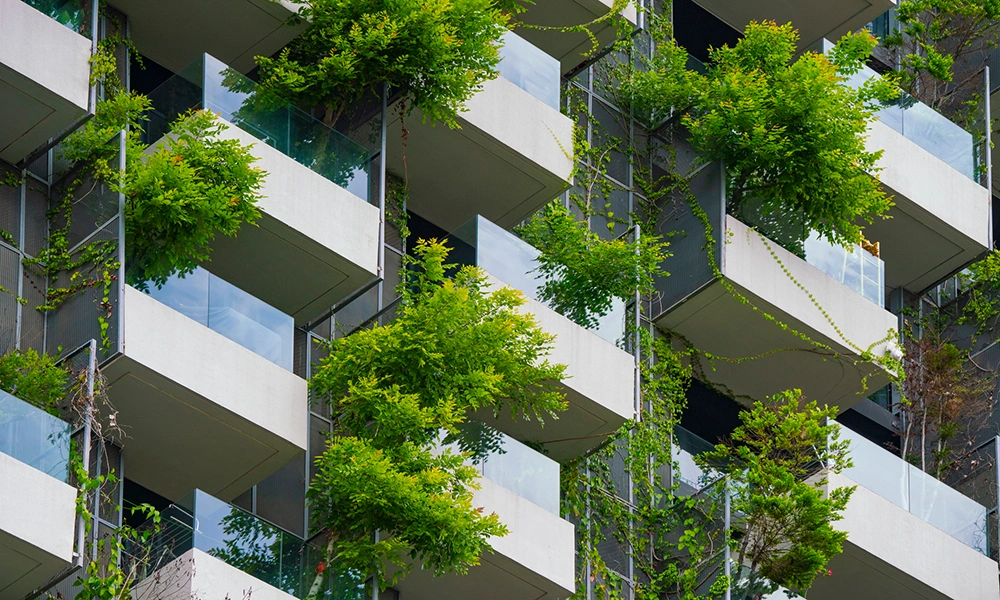
Which facade material suits your home?
Whether you choose wood, brick, or metal cladding, every material has its pros and cons. When selecting a modern façade design for your home, consider the following factors:
Climatic conditions
Your budget and costs
Maintenance and upkeep requirements
The material’s impact on insulation and indoor climate
Your personal preferences
The variety of materials, textures, and colours allows you to customize your façade to match your vision, giving your home a truly individual look. Why not combine different materials to create striking contrasts and visually distinguish various areas of your house?
Before starting your facade renovation, consult with your local building authority to determine whether you need a building permit for your project. It’s also essential to check whether your design ideas comply with the regulations for your construction and residential area. Many communities value a harmonious appearance and may impose restrictions on alterations.
